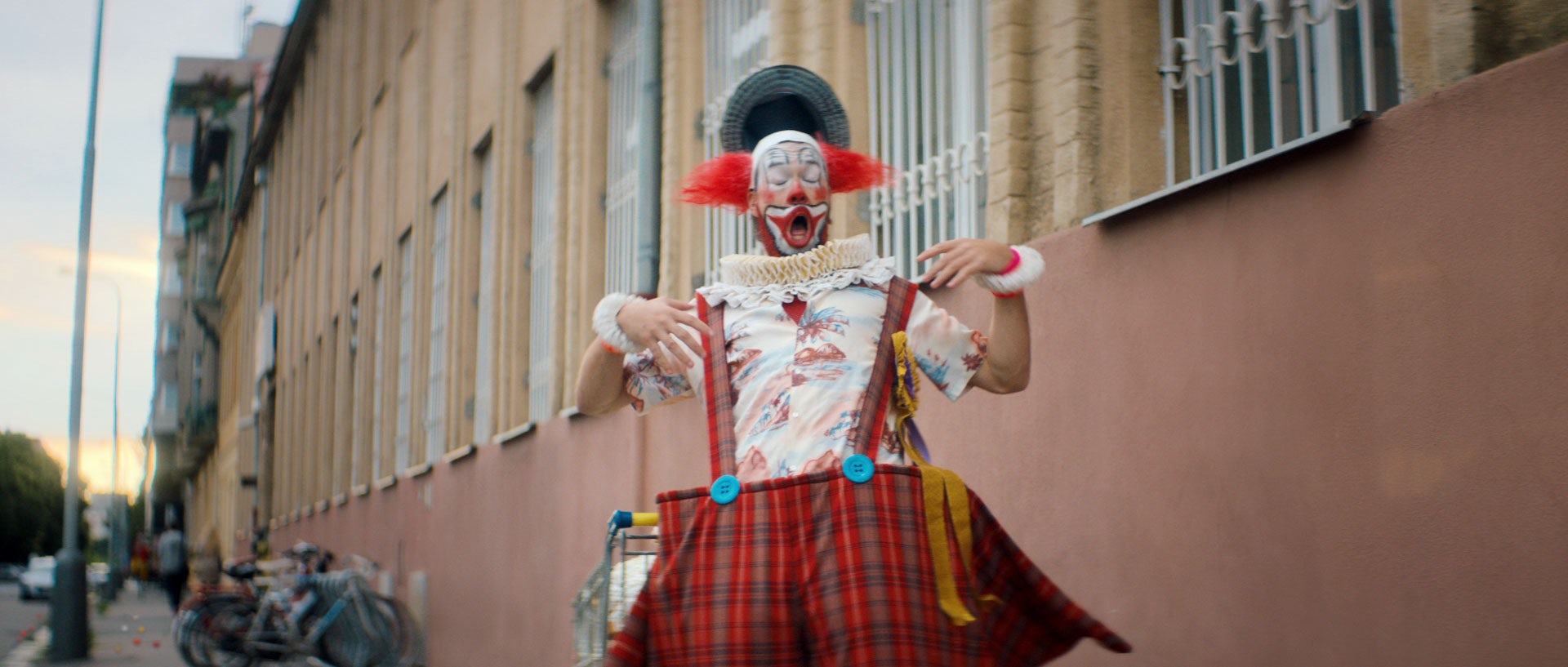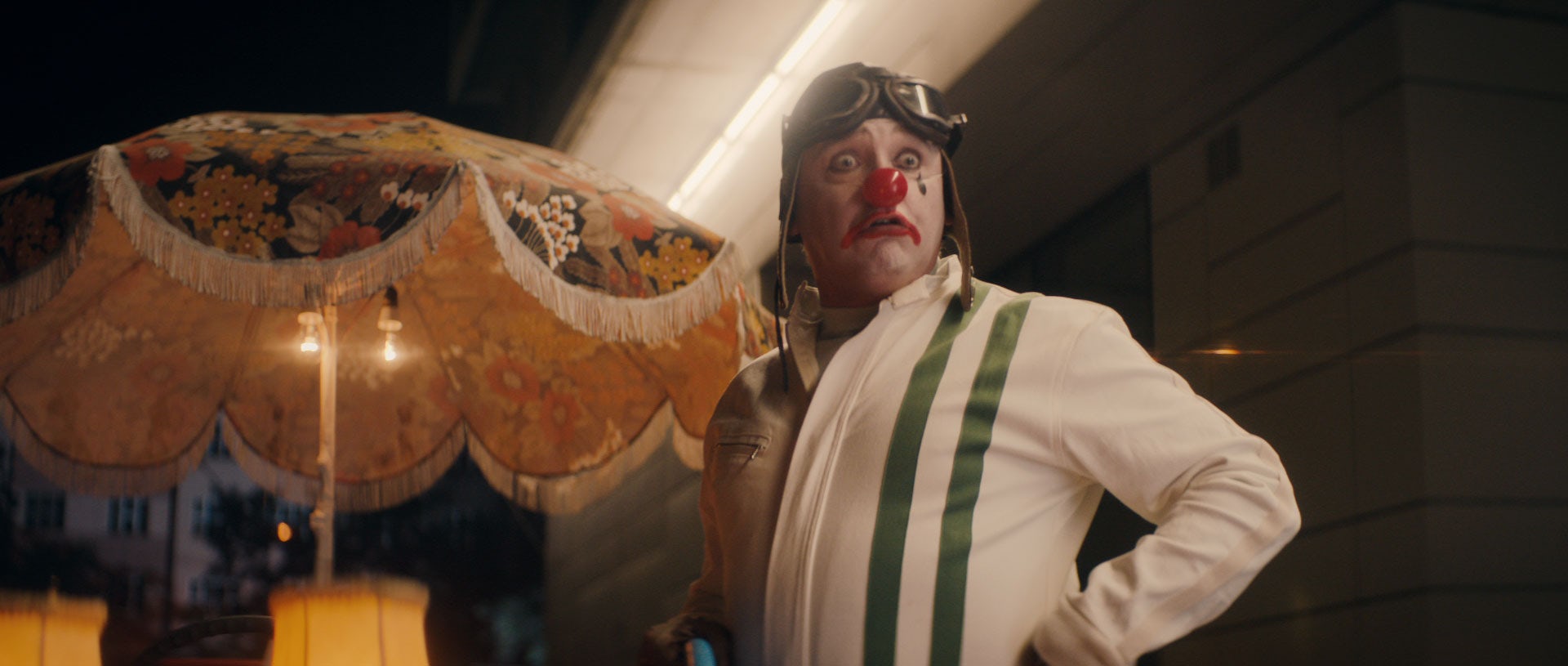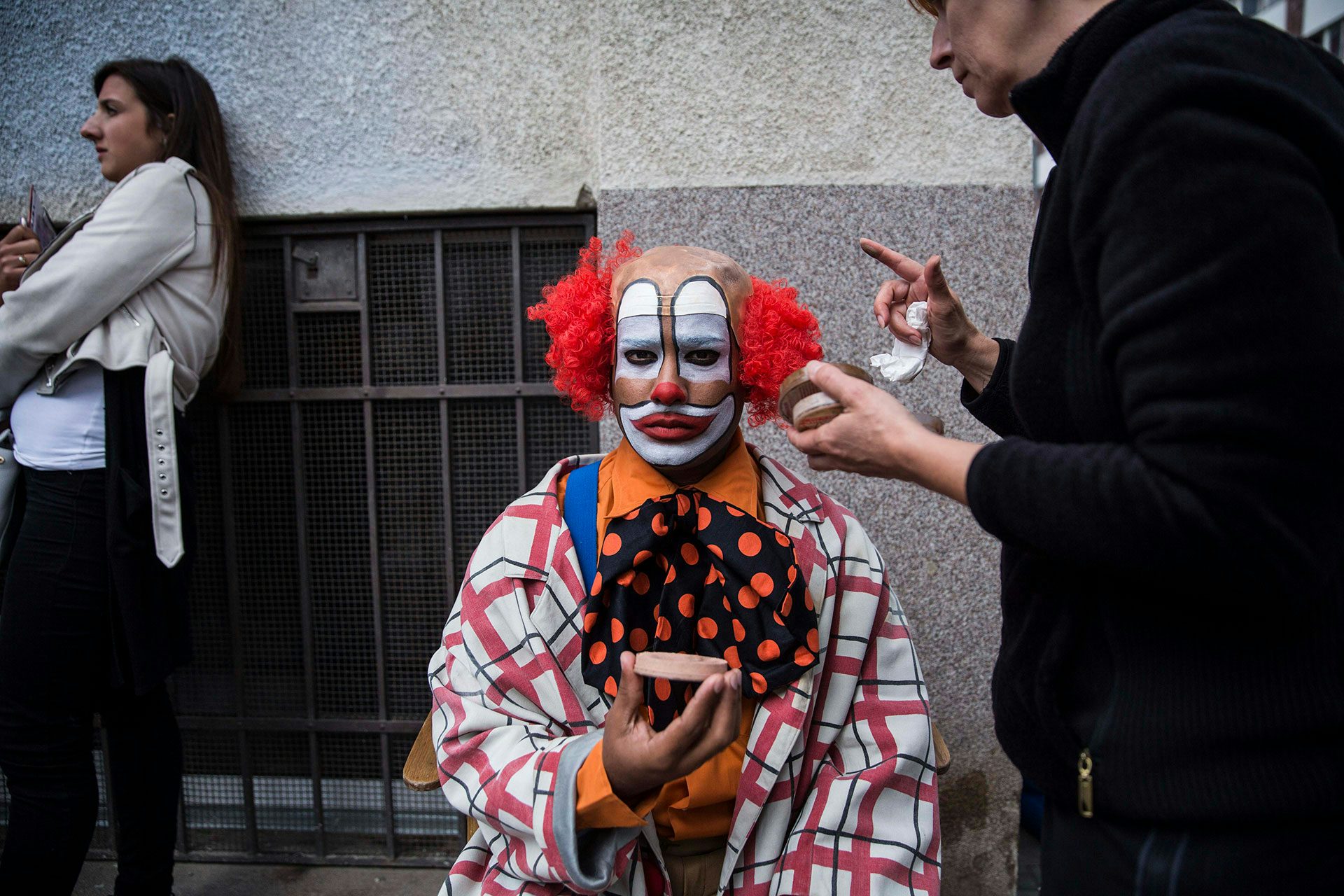Audi Clowns by Ringan Ledwidge and BBH London
With attention to detail and a focus on craft, director Ringan Ledwidge and ad agency BBH London turned an ad about car safety features into a spot packed with charm and pathos. This project is Best in Book – Commercials in The Annual 2018
Audi’s ad Clowns is a masterclass in how to promote something boring but useful with heaps of emotion and panache.
The ad aims to highlight the in-built safety features in Audi cars. These are functions that might well persuade customers to buy a particular car over another, but by their nature, they are hard to promote in an exciting way.
To get around this, BBH London came up with a simple idea that had plenty of opportunity for rich visual expression. The ad showed scenes of people driving around towns and motorways, but with a difference: here most of the drivers on the roads were clowns – literally – but Audi’s special features kept the motorists safe regardless of what was thrown at them.
“It was the simplicity of the script that appealed,” says director Ringan Ledwidge of what drew him to the spot. “It was the fact that it was actually quite traditional, in a sense. I like that it was a commercial for something that’s quite boring really. Safety features – it’s not the most exciting thing, but the idea of safety and clowns was instantly appealing. Then it was about how you execute it in a way that somehow can emotionally connect with an audience.”
Ledwidge was keen to embrace the full range of emotions that clowns can express, rather than just present them as stupid or inept. “I’ve always seen clowns as quite sad characters,” he continues. “They’re quite tragic characters really. I liked the idea of how can you use them and not just look at them as idiots doing stupid things, how can you have some sort of empathy with them.”
BBH had already suggested that the film be set to a cover version of Stephen Sondheim’s Send In The Clowns from the 1973 musical A Little Night Music, originally performed by Glynis Johns. The ad’s version is sung by Lisa Hannigan and produced by Faultline but retains the poignancy of the original.


“Obviously the music gives the piece a very particular tone and that was in place from the very beginning,” says Ledwidge. “So I took that very much as my indication of how the whole thing should feel tonally.”
To cast the clowns and create the cars for the ad, Ledwidge and the production team at Rattling Stick went to Prague. “I was keen to go there for two reasons,” he says. “One that they have great art departments there so I knew they’d be really good at building these slightly funny, ad-hoc cars. I wanted the cars to feel real and contemporary but still have the clown element to them, so they didn’t feel like Noddy clown cars.
“Then Prague has got a rich tradition of clowns and mime, and theatre,” he continues. “I knew there was a clown school there, I just figured it would be an interesting place to go. I think probably 70% of the main featured clowns were people who were clowns [rather than actors playing clowns] and had clown experience. It certainly brought a very different feeling to it. They also understood the need to find that right spot, of it not just being ‘annoying clowns’.
“The casting was great. As soon as they came, they nailed it, you just could instantly see the film and see how it was going to work. Creating each one of those clowns and their personalities through the casting and wardrobe and the make-up was actually really good fun – you don’t get that many opportunities to really create these slightly outlandish characters. Normally you’re working in quite restrained confines in terms of character and wardrobe – it was so much fun to go a bit nuts.”


According to production designer Nick Foley-Oates, Ledwidge was keen to achieve a ‘punk-clown’ look. This aesthetic was extended into the cars that the clowns drove, which were also inspired by a DIY approach.
“There were a few ideas that came through looking at the way people customise cars, however badly,” says Foley-Oates. “That led to finding references where lack of resources or bold-faced stupidity had led to some inspirational elements, like taping a hand mirror to one’s wing mirror that might have been broken, or sticking a dining room chair into a vehicle to replace a broken car seat. This and the kind of testosterone-fuelled ‘car meets’ that take place in many countries [provided inspiration]. Where the characteristics of youth and bravado actually provide some interesting visions.”
Of the actions of the clowns themselves, Ledwidge encouraged a certain amount of self-expression by the performers, within the constraints of the various scenarios contained in the ad. “They were all quite specific in what they did, so then it was just a case of going ‘well I like your ‘clown’. That’s what you find with them, it’s quite interesting. The ones who were actual clowns had obviously really developed what kind of clown they were. Some are more physical, some do the clumsy thing … some are sad, some are cheeky.
“Although one guy who was the exception to the rule, who was brilliant, is the very last clown, the clown at the end who’s watering his car as the Audi pulls in and self-parks. He’s a really serious theatre actor who’s quite well-known in the Czech Republic. He’s known for playing Othello and doing these big, beefy roles, but he just came in and loved it because it was completely different to anything he’d been doing for years. And actually he ended up being one of the biggest buffoons out of all of them. He was obviously enjoying doing something else for a couple of evenings,” Ledwidge says.



To some degree, the Audi Clowns ad has an almost old-fashioned feel: big TV spots that are led by craft and powerful direction are becoming rare beasts in an industry currently enthralled by digital technology, as well as chasing data and programmatic models.
Ledwidge admits that it is less common to see commercials that are so craft-led these days, though says he is still “lucky enough to see a few”. “I don’t think the craft thing is necessarily disappearing because of creatives not writing it, I think it’s more in the current climate, budgets seem to be getting squeezed a lot. And naturally the first thing that seems to suffer is the craft side of it, because people are making compromises in order to win jobs.
“I’m a stickler for prep, for example. The only way you can craft something really well is by having the right amount of prep to try different ideas out, look at different things, work with your different departments to really explore. Also for them to have the right amount of time to prep a job, because it’s only really in those periods where you can have the conversations and have the time to experiment. Certainly by budgets being squeezed I think it’s made it harder for craft to shine.”

He also puts the success of the Audi Clowns ad down to another concept that’s almost become old-fashioned in advertising: a strong relationship between the agency, the client and the director, which is rooted in trust.
“It always works when there’s an element of trust between yourself, the agency and the client,” he says. “It just means you’re able to then create something really special.
“This was one of those occasions where you’re on a job going, ‘this is amazing that I’m getting paid for this, I’m standing around with 20 clowns and putting different noses on them’,” he continues. “It’s a very enjoyable thing to do and be part of. Then obviously it’s great when you have a client like Audi and an agency like BBH where there’s trust and they back you up and go with what your vision is, that obviously helps a lot.”
View all the winning work from The Annual 2018 here.
Entrant: Rattling Stick. Client: Audi UK. Marketing Director: Benjamin Braun. Ad Agency: BBH London. Copywriter: Doug Fridlund. Art Director: Mikael Alcock. ECD: Ian Heartfield. Producer: David Lynch.Assistant Producer: Charlie Hurlock. Production Company: Rattling Stick. Director: Ringan Ledwidge. Executive Producer: Sally Humphries. Producer: Tim Nunn. DoP: Adam Arkapaw. Post-Production: The Mill. Editing House: Work Editorial. Editor: Rich Orrick. Sound: String and Tins. Head of Music & Music Supervisor: Ayla Owen. Music Supervisor: Julz Baldwin
Record Producer: David Kosten. Artist: Faultline featuring Lisa Hannigan.




